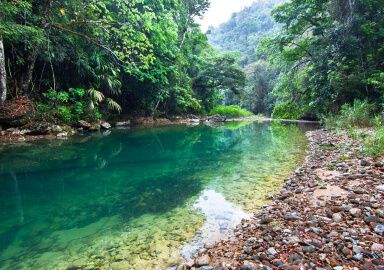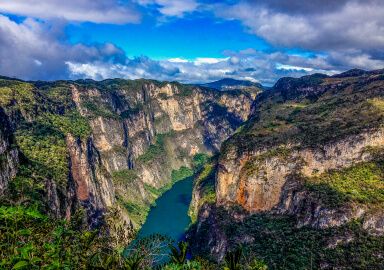Tarpon
Tarpon are large shiny silvery gamefish found mostly in tropical and sub-tropical areas of the Atlantic and Indian oceans. They are famous for their fighting ability, especially spectacular and repeated leaps into the air.
View 52 listings
52
listings
–
price starting from
7
countries
–
to the nearest trip
Where and When?
The Atlantic Tarpon are found from Nova Scotia to Brazil in the west and Mauritania to Angola on the African coast. On the west coast of the Atlantic Ocean the best known Tarpon fishing centers are around Florida and Texas and the Caribbean Sea in places like Costa Rica, Trinidad and Cuba. On the other side of this ocean most sport fishing for Tarpon is located at lodges along the coasts of Gabon, Angola, Sierra Leone and Guinea Bissau. Western Atlantic fisheries can sometimes be fairly easily accessed and well developed while those on the African shores tend to be isolated, exclusive and difficult to access. Oxeye Tarpon are found throughout much of the Indian Ocean shallows from East Africa to Australia. The fish themselves can be found in the open ocean but are mostly caught in shallow water areas, inlets, bays, estuaries and even far up rivers. Generally Tarpon are a warmer water species and most fishing is carried out in the spring or summer months, with May and June being the most popular in the northern hemisphere and October to December in the south.
About Tarpon
Although these fish basically lack any obvious teeth, they are usually the top predators wherever they are found. There are two species, the Atlantic Tarpon (Megalops atlanticus) and the Indian Ocean or oxeye Tarpon (Megalops cyprinoides). The former has a maximum confirmed length of 2.5 metres and mass of 161 kilograms. The latter is usually much smaller, and has been recorded to reach 1.5 metres and 18 kilograms in weight. Both species can be long lived, with the Atlantic Tarpon attaining at least 55 years of age. The Tarpon is primarily a game fish and, although edible, it is rarely targeted for food. Tarpon mostly live in coastal waters and are well known for entering shallow bays, estuaries, rivers, lagoons and mangrove swamps as they are very tolerant of low salinities.
Learn more about tarpon from our blog
How to Catch?
As a voracious top predator, the Tarpon can be caught on many types of tackle. Tarpon rely heavily on their massive eyes for locating and capturing prey and thus size, shape and colour of fly, lure or bait is very important. The best type of tackle often depends on when and where you are fishing, what size fish is to be targeted and your own preferences, resources and abilities. Great success can be had using live bait from the shore or boat while spinning can often work well. The real enthusiast may try fly fishing, but this can be quite a challenge.
Once the Tarpon has smashed into your fly, the fight really begins. Hooking the fish is only the beginning of any Tarpon story. There is almost no soft flesh near the mouth and almost inevitably the fish will repeatedly leap up to three metres out of the water, vigorously shaking its head in an attempt to dislodge any hook. Tarpon may be caught from many “platforms” including beaches, boats and even jetties and piers. Local knowledge or a good guide is essential to boost chances of landing a good fish.
Most Tarpon fishing is “catch and release” and it is generally illegal in places like Florida to kill these fish, but they are a species that most true enthusiasts are prepared to go to a lot of trouble to try and land, and a species that is, or should be, on most serious sport anglers’ “bucket lists”.








